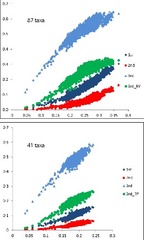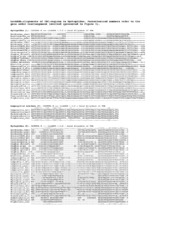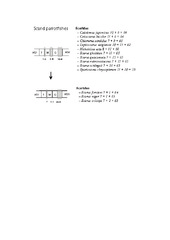| dc.contributor.author | Poulsen, Jan Yde | eng |
| dc.contributor.author | Byrkjedal, Ingvar | eng |
| dc.contributor.author | Willassen, Endre | eng |
| dc.contributor.author | Rees, David John | eng |
| dc.contributor.author | Takeshima, Hirohiko | eng |
| dc.contributor.author | Satoh, Takashi P. | eng |
| dc.contributor.author | Shinohara, Gento | eng |
| dc.contributor.author | Nishida, Mutsumi | eng |
| dc.contributor.author | Miya, Masaki | eng |
| dc.date.accessioned | 2014-04-25T07:28:44Z | |
| dc.date.available | 2014-04-25T07:28:44Z | |
| dc.date.issued | 2013-06-03 | eng |
| dc.identifier.issn | 1471-2148 | |
| dc.identifier.uri | https://hdl.handle.net/1956/7909 | |
| dc.description.abstract | Background: A skewed assemblage of two epi-, meso- and bathypelagic fish families makes up the order Myctophiformes – the blackchins Neoscopelidae and the lanternfishes Myctophidae. The six rare neoscopelids show few morphological specializations whereas the divergent myctophids have evolved into about 250 species, of which many show massive abundances and wide distributions. In fact, Myctophidae is by far the most abundant fish family in the world, with plausible estimates of more than half of the oceans combined fish biomass. Myctophids possess a unique communication system of species-specific photophore patterns and traditional intrafamilial classification has been established to reflect arrangements of photophores. Myctophids present the most diverse array of larval body forms found in fishes although this attribute has both corroborated and confounded phylogenetic hypotheses based on adult morphology. No molecular phylogeny is available for Myctophiformes, despite their importance within all ocean trophic cycles, open-ocean speciation and as an important part of neoteleost divergence. This study attempts to resolve major myctophiform phylogenies from both mitogenomic sequences and corroborating evidence in the form of unique mitochondrial gene order rearrangements. Results: Mitogenomic evidence from DNA sequences and unique gene orders are highly congruent concerning phylogenetic resolution on several myctophiform classification levels, corroborating evidence from osteology, larval ontogeny and photophore patterns, although the lack of larval morphological characters within the subfamily Lampanyctinae stands out. Neoscopelidae is resolved as the sister family to myctophids with Solivomer arenidens positioned as a sister taxon to the remaining neoscopelids. The enigmatic Notolychnus valdiviae is placed as a sister taxon to all other myctophids and exhibits an unusual second copy of the tRNA-Met gene – a gene order rearrangement reminiscent of that found in the tribe Diaphini although our analyses show it to be independently derived. Most tribes are resolved in accordance with adult morphology although Gonichthyini is found within a subclade of the tribe Myctophini consisting of ctenoid scaled species. Mitogenomic sequence data from this study recognize 10 reciprocally monophyletic lineages within Myctophidae, with five of these clades delimited from additional rearranged gene orders or intergenic non-coding sequences. Conclusions: Mitogenomic results from DNA sequences and unique gene orders corroborate morphology in phylogeny reconstruction and provide a likely scenario for the phylogenetic history of Myctophiformes. The extent of gene order rearrangements found within the mitochondrial genomes of myctophids is unique for phylogenetic purposes. | en_US |
| dc.language.iso | eng | eng |
| dc.publisher | BioMed Central | eng |
| dc.rights | Attribution CC BY | eng |
| dc.rights.uri | http://creativecommons.org/licenses/by/2.0 | eng |
| dc.subject | Myctophiformes | eng |
| dc.subject | Myctophidae | eng |
| dc.subject | Neoscopelidae | eng |
| dc.subject | Phylogeny | eng |
| dc.subject | Mitogenomics | eng |
| dc.subject | Gene rearrangements | eng |
| dc.subject | Non-coding sequence | eng |
| dc.title | Mitogenomic sequences and evidence from unique gene rearrangements corroborate evolutionary relationships of myctophiformes (Neoteleostei) | eng |
| dc.type | Peer reviewed | en_US |
| dc.type | Journal article | en_US |
| dc.date.updated | 2013-08-23T08:44:26Z | |
| dc.description.version | publishedVersion | |
| dc.rights.holder | Copyright 2013 Poulsen et al.; licensee BioMed Central Ltd | |
| dc.rights.holder | Jan Y Poulsen et al.; licensee BioMed Central Ltd. | eng |
| dc.source.articlenumber | 111 | |
| dc.identifier.doi | https://doi.org/10.1186/1471-2148-13-111 | |
| dc.identifier.cristin | 1033129 | |
| dc.source.journal | BMC Evolutionary Biology | |
| dc.source.40 | 13 | |






